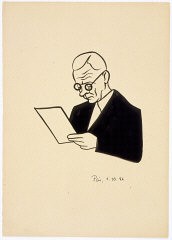You searched for: 公募私募系统源码定制开发【TG���������@EK7676】平台包网搭建公募私募系统源码定制开发【TG���������@EK7676】平台包网搭建1wW6pnGvVO
<< Previous | Displaying results 151-200 of 652 for "公募私募系统源码定制开发【TG���������@EK7676】平台包网搭建公募私募系统源码定制开发【TG���������@EK7676】平台包网搭建1wW6pnGvVO" | Next >>
-
Reich President Paul von Hindenburg meets with Chancellor Adolf Hitler.
PhotoReich President Paul von Hindenburg poses with Chancellor Adolf Hitler. Hindenburg appointed Hitler chancellor on January 30, 1933. Germany, 1933-1934.

-
Thomas with his mother, Gerda, before Thomas's departure for the United States
PhotoThomas Buergenthal with his mother, Gerda, before Thomas's departure for the United States. Bad Neuheim, Germany, summer 1951. With the end of World War II and collapse of the Nazi regime, survivors of the Holocaust faced the daunting task of rebuilding their lives. With little in the way of financial resources and few, if any, surviving family members, most eventually emigrated from Europe to start their lives again. Between 1945 and 1952, more than 80,000 Holocaust survivors immigrated to the United…
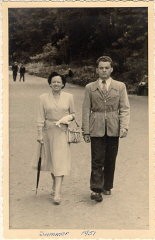
-
Norbert Wollheim describes forced labor at the Buna works
Oral HistoryNorbert studied law and was a social worker in Berlin. He worked on the Kindertransport (Children's Transport) program, arranging to send Jewish children from Europe to Great Britain. His parents, who also lived in Berlin, were deported in December 1942. Norbert, his wife, and their child were deported to Auschwitz in March 1943. He was separated from his wife and child, and sent to the Buna works near Auschwitz III (Monowitz) for forced labor. Norbert survived the Auschwitz camp, and was liberated by US…
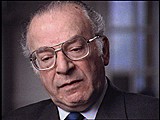
-
Dachau survivors at liberation
PhotoCamp survivors crowded in barracks at liberation. Dachau, Germany, April 29-May 1, 1945.
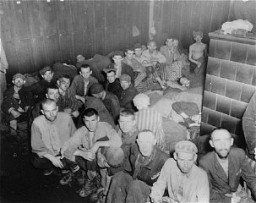
-
Adolf Hitler's authorization for the Euthanasia Program
PhotoAdolf Hitler's authorization for the Euthanasia Program (Operation T4), signed in October 1939 but dated September 1, 1939.
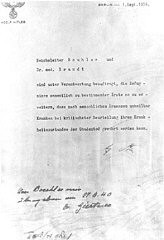
-
Father Charles Coughlin
PhotoFather Charles Coughlin, leader of the antisemitic Christian Front, delivers a radio broadcast. United States, February 4, 1940.
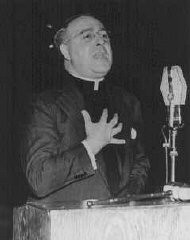
-
A refugee collapses
PhotoAn exhausted Jewish woman from the Exodus 1947 refugee ship is given a drink as British soldiers stand nearby. The British forcibly returned the passengers to Europe. Haifa, Palestine, July 19, 1947.
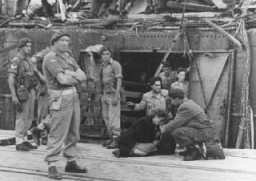
-
Page from volume 5 of a set of scrapbooks documenting the German occupation of Denmark
ArtifactPage from volume 5 of a set of scrapbooks compiled by Bjorn Sibbern, a Danish policeman and resistance member, documenting the German occupation of Denmark. Bjorn's wife Tove was also active in the Danish resistance. After World War II, Bjorn and Tove moved to Canada and later settled in California, where Bjorn compiled five scrapbooks dedicated to the Sibbern's daughter, Lisa. The books are fully annotated in English and contain photographs, documents and three-dimensional artifacts documenting all…
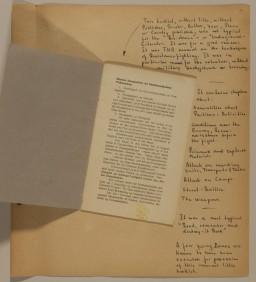
-
Ruth Webber describes the bitterness that she felt after the end of the war when she was in an orphanage in Krakow
Oral HistoryRuth was four years old when the Germans invaded Poland and occupied Ostrowiec. Her family was forced into a ghetto. Germans took over her father's photography business, although he was allowed to continue working outside the ghetto. Before the ghetto was liquidated, Ruth's parents sent her sister into hiding, and managed to get work at a labor camp outside the ghetto. Ruth also went into hiding, either in nearby woods or within the camp itself. When the camp was liquidated, Ruth's parents were split up.…
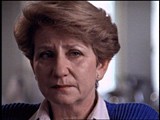
-
Nuremberg Race Laws
ArticleLearn more about the Reich Citizenship Law and the Law for the Protection of German Blood and German Honor, collectively known as the Nuremberg Race Laws.
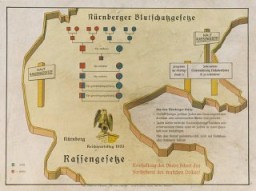
-
We Will Never Die, program cover, 1943
ArtifactThe program cover for "We Will Never Die" featured Arthur Szyk’s "Tears of Rage" artwork. The cover's original dimensions are: 12 1/16" x 9 1/16" x 3/16.
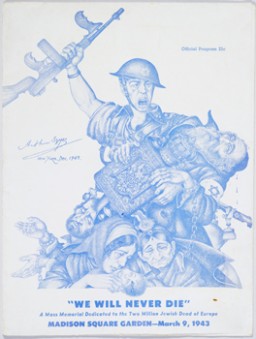
-
1939: Key Dates
ArticleExplore a timeline of key events during 1939 in the history of Nazi Germany, World War II, and the Holocaust.
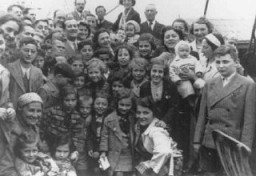
-
Plight of Jewish Children
ArticleDuring the Holocaust, some children went into hiding to escape Nazi persecution. They faced constant fear, dilemmas, and danger.
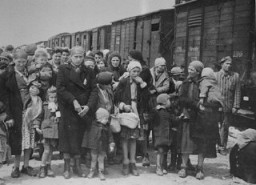
-
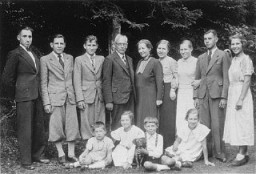
-
First Letter to All Judges
ArticleLearn how the "First Letter to all Judges" increased the pressure on German judges to give verdicts and sentences according to Nazi principles and ideology.
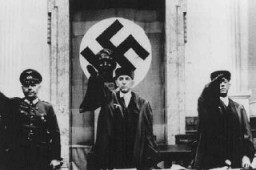
-
1941: Key Dates
ArticleExplore a timeline of key events during 1941 in the history of Nazi Germany, World War II, and the Holocaust.
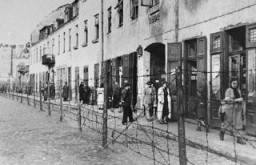
-
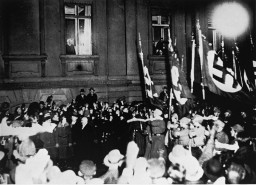
-
The Holocaust and World War II: Key Dates
ArticleRead a detailed timeline of the Holocaust and World War II. Learn about key dates and events from 1933-45 as Nazi antisemitic policies became more radical.

-
Opening of the 11th Summer Olympic Games
PhotoOn August 1, 1936, Hitler opened the 11th Summer Olympic Games in Berlin, Germany. Inaugurating a new Olympic ritual, a lone runner arrived bearing a torch carried by relay from the site of the ancient Games in Olympia, Greece. This photograph shows the last of the runners who carried the Olympic torch arriving in Berlin to light the Olympic Flame, marking the start of the 11th Summer Olympic Games. Berlin, Germany, August 1, 1936.
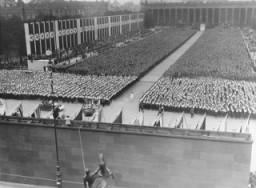
-

-
World War II Dates and Timeline
ArticleWorld War II was the largest and most destructive conflict in history. Learn about key WWII dates in this timeline of events, including when WW2 started and ended.
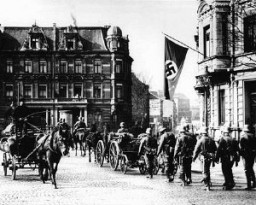
-
Damaged Jewish-owned store
PhotoView of damage done to a Jewish-owned store during the anti-Jewish boycott. Frankfurt, Germany, April 1, 1933.
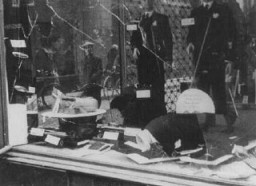
-
Opening of the 1936 Olympic Games
PhotoScene from the opening ceremonies of the 1936 Olympic Games. Berlin, Germany, August 1, 1936.
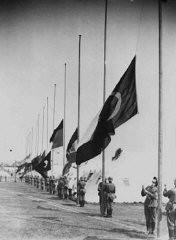
-
Opening of the Olympic Games in Berlin
PhotoAdolf Hitler salutes the Olympic flag at the opening of the Olympic Games in Berlin. Germany, August 1, 1936.
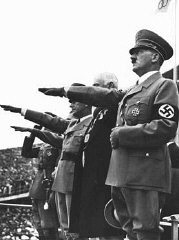
-
Execution of Ion Antonescu
PhotoA Romanian firing squad prepares to execute former Romanian prime minister Ion Antonescu. Camp Jivava, near Bucharest, Romania, June 1, 1946.
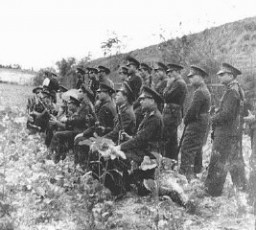
-
Ruins of a Polish town
PhotoA Polish town lies in ruins following the German invasion of Poland, which began on September 1, 1939.
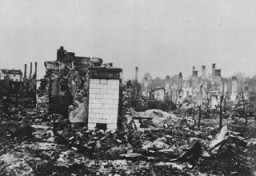
-
Sign for a boycott of Jewish-owned businesses
PhotoMembers of the SA post signs demanding that Germans boycott Jewish-owned businesses. Berlin, Germany, April 1, 1933.
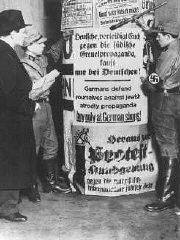
-
Adolf Eichmann: Key Dates
ArticleAdolf Eichmann was a key figure in implementing the “Final Solution,” the Nazi plan to kill Europe's Jews. Learn more through key dates and events.
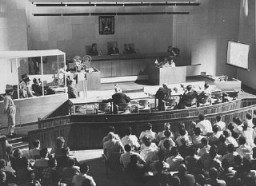
-
Vilna
ArticleDuring the Holocaust, the creation of ghettos was a key step in the Nazi process of ultimately destroying Europe's Jews. Learn about the Vilna ghetto.
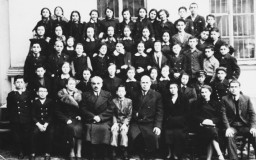
-
Reichstag Fire Decree
ArticleThe Reichstag Fire Decree of February 1933 restricted individual freedoms, and allowed Hitler's government to overrule state and local laws and overthrow state and local governments.
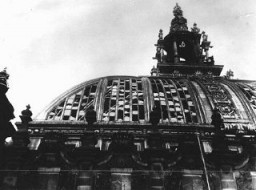
-
Belzec: Key Dates
ArticleExplore key events in the history of the Belzec killing center in the Nazi camp system. It was constructed for the sole purpose of murdering Jews.
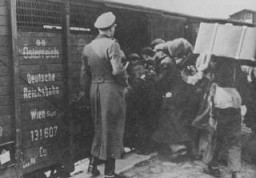
-
Hajj Amin al-Husayni: Key Dates
ArticleKey dates associated with Hajj Amin al-Husayni, former Mufti of Jerusalem who participated in a pro-Axis coup in Iraq in 1941. Explore further
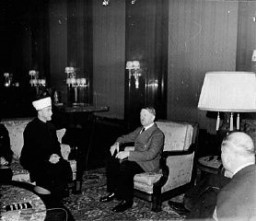
-
Warsaw Uprising
ArticleThe 1944 Warsaw uprising was the single largest military effort undertaken by resistance forces to oppose German occupation during World War II.
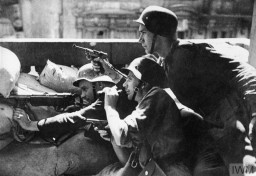
-
Zdziecioł (Zhetel)
ArticleThe Nazis occupied Zdziecioł (Zhetel), Poland in 1941. Learn more about the city and ghetto during World War II.
-
Halle
ArticleHalle an der Saale was a satellite camp of Buchenwald concentration camp. It was established by the Nazis in Saxony, Germany in 1941.
-
Chart with the title "Die Nürnberger Gesetze" [Nuremberg Race Laws]
PhotoChart with the title "Die Nürnberger Gesetze" [Nuremberg Race Laws]. In the fall of 1935, German Jews lost their citizenship according to the definitions posed in these new regulations. Only "full" Germans were entitled to the full protection of the law. This chart was used to aid Germans in understanding the laws. White circles represent "Aryan" Germans, black circles represent Jews, and partially shaded circles represent “mixed raced” individuals. The chart has columns explaining the…
![Chart with the title "Die Nürnberger Gesetze" [Nuremberg Race Laws]](https://encyclopedia.ushmm.org/images/thumb/109130bd-4617-43ad-a556-d2955f1a4aa3.jpg)
-
Julius Streicher: Biography
ArticleJulius Streicher, an early Nazi Party members, was an organizer of the anti-Jewish boycott of April 1933 and publisher of the virulently antisemitic Der Stürmer.
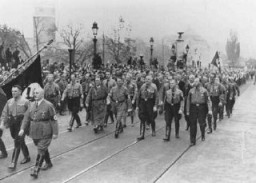
-
Reinhard Heydrich: Key Dates
ArticleKey dates in the life of Reinhard Heydrich, chief of the Reich Security Main Office, the SS and police agency most directly concerned with implementing Final Solution.
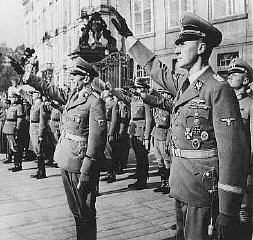
-
Boycott of Jewish Businesses
ArticleThe April 1, 1933, boycott of Jewish-owned businesses marked the beginning of a nationwide campaign by the Nazi Party against the entire German Jewish population.
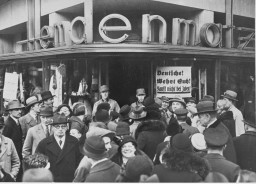
-
The Enabling Act
ArticleThe Enabling Act of March 1933 allowed the Reich government to issue laws without the consent of Germany’s parliament. It laid the foundation for the Nazification of German society.
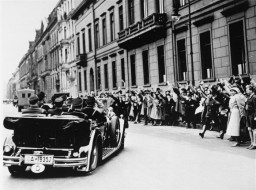
-
German Railways and the Holocaust
ArticleThe European rail network played a crucial role in the implementation of the Final Solution. Millions were deported by rail to killing centers and other sites.
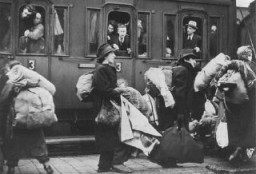
-
Righteous Among the Nations
ArticleRighteous Among the Nations are non-Jewish individuals honored by Yad Vashem, Israel's Holocaust memorial, for risking their lives to aid Jews during the Holocaust.
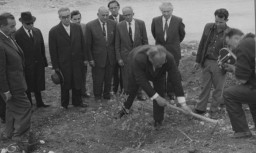
-
Invasion of Poland, Fall 1939 - Photographs
Media EssayGermany invaded Poland on September 1, 1939. Despite fighting tenaciously, the Polish Army was defeated within weeks.
-
The Boycott of Jewish Businesses
Media EssayOn April 1, 1933—less than 3 months after rising to power—the Nazis staged a nationwide boycott of Jewish businesses. The boycott signaled the start of the Nazi movement to exclude Jews from all aspects of German soci...
-
Two ovens inside the Dachau crematorium
PhotoTwo ovens inside the crematorium at the Dachau concentration camp. Dachau, Germany, July 1, 1945. This image is among the commonly reproduced and distributed images of liberation. These photographs provided powerful documentation of the crimes of the Nazi era.

-
Group portrait of members of a Zionist pioneer youth group
PhotoGroup portrait of the members of the Zionist pioneer youth group, Ha-Shomer ha-Tsa'ir Hachshara. Kalisz, Poland, May 1, 1935.

-
Evidence presented at the International Military Tribunal
PhotoPhotographs, artifacts, and a map presented as evidence at the International Military Tribunal. Nuremberg, Germany, between November 20, 1945, and October 1, 1946.
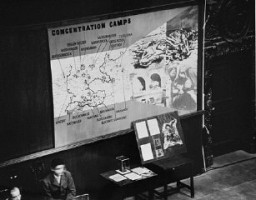
-
Defendants' cell block in Nuremberg
PhotoBirds-eye view of the fenced-in cell block where defendants in the International Military Tribunal war crimes trial were imprisoned. Nuremberg, Germany, between November 20, 1945, and October 1, 1946.
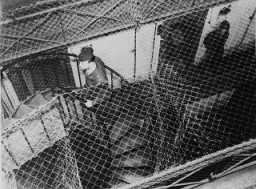
-
Judgment Day at the International Military Tribunal
PhotoAn armored car parked outside the gate of the Palace of Justice in Nuremberg on the day the judgment of the International Military Tribunal was handed down. Nuremberg, Germany, October 1, 1946.

-
Caricature of defendant Alfred Rosenberg
PhotoCaricature of Nuremberg International Military Tribunal defendant Alfred Rosenberg, by the German newspaper caricaturist Peis. Nuremberg, Germany, October 1, 1946.
